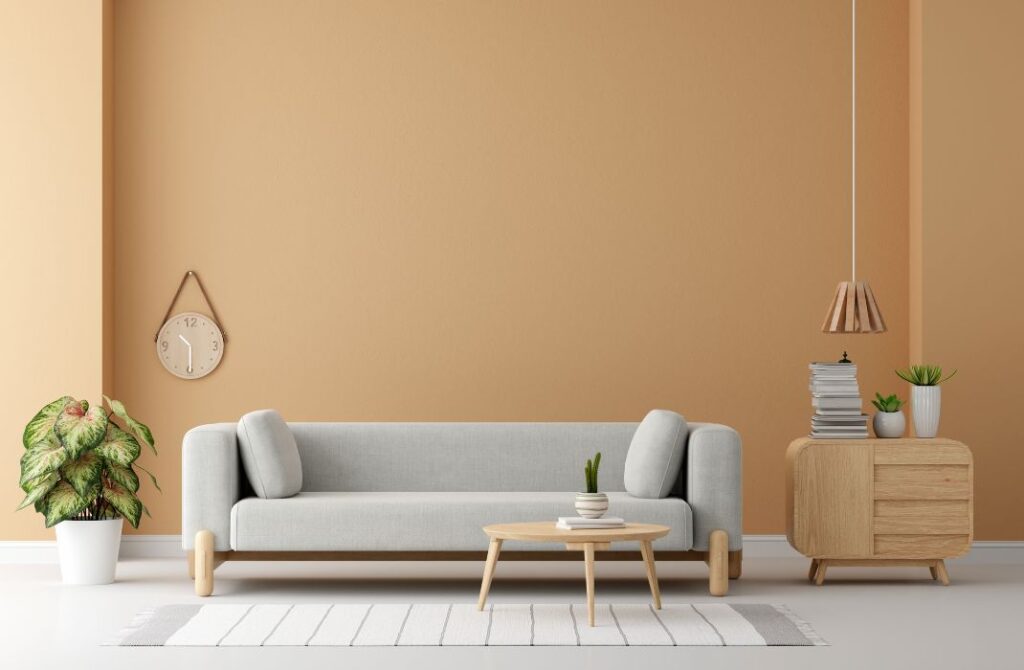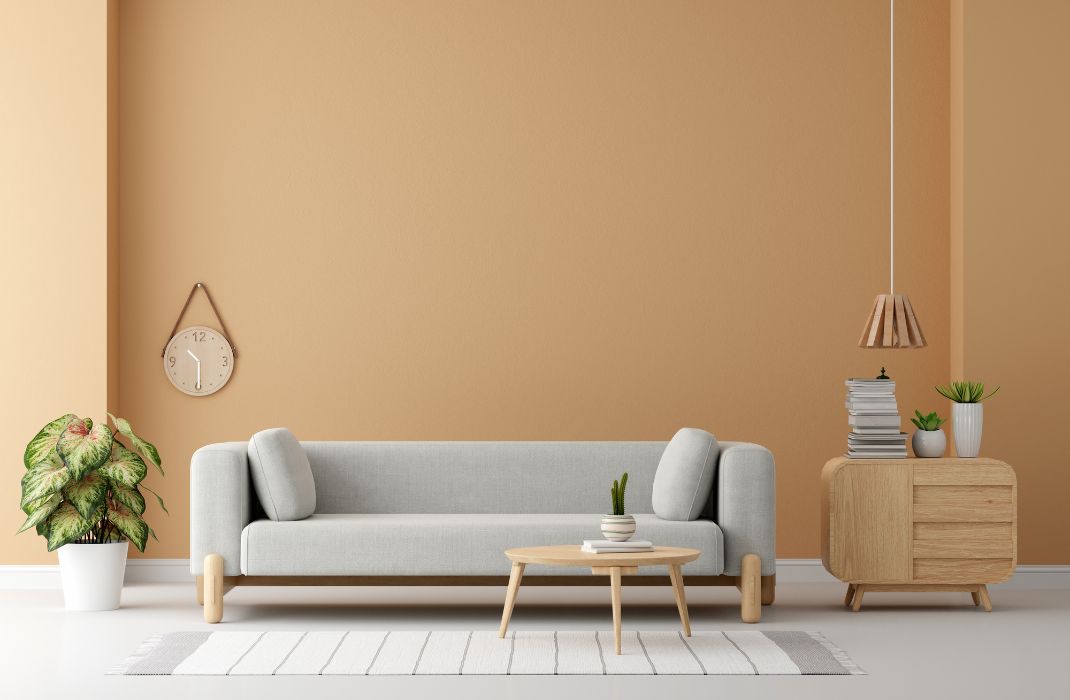
Introduction
Welcome to your new home! Congratulations on this exciting milestone. One of the most enjoyable aspects of moving into a new house is furnishing it to make it truly feel like home. In this guide, we will take you through the process of finding the perfect furniture for your new space. Whether you are starting from scratch or looking to revamp your current furniture collection, we have got you covered.
Having well-furnished interiors not only enhances the aesthetic appeal of your home but also contributes to your daily comfort and functionality. Thoughtful furniture choices can transform your living spaces and create a welcoming atmosphere for you, your family, and your guests. So let’s dive into the journey of discovering the best ways to buy furniture for your new house.
Determining Your Needs and Preferences
Before embarking on your furniture buying adventure, it is crucial to understand your needs and preferences. Your lifestyle, family size, presence of pets, and other factors play an essential role in determining the type of furniture that will best suit your home.
Consider how you will be utilizing each space in your new house. Will you need furniture that is child-friendly or pet-friendly?
- If you have children, opt for furniture that is durable and easy to clean, like stain-resistant fabrics or leather upholstery.
- If you have pets, choose furniture with sturdy materials and scratch-resistant surfaces to withstand their playful antics.
- Identify your personal style and design preferences. Determine whether you gravitate towards traditional, modern, minimalist, or eclectic aesthetics. This will help guide your furniture selection process and ensure a cohesive look throughout your home.
- Establish a budget and prioritize your furniture needs accordingly. Setting a budget will help you make informed decisions and prevent overspending. Consider investing more in essential furniture pieces that will be used frequently, such as sofas or mattresses, and allocate a smaller portion of your budget for accessories and decorative items.
Space Planning and Furniture Measurements
Once you have a clear understanding of your needs and preferences, it’s time to assess your available space and create a solid furniture layout plan. Accurate space planning is key to creating a functional and visually appealing home.
- Measure your available space and floor plan. Take precise measurements of each room and note any architectural elements, such as windows, doors, and alcoves, that may impact furniture placement.
- Pay attention to the dimensions of your furniture. It is essential to ensure that the furniture you choose fits well within your space without crowding or overwhelming it. Measure not only the overall dimensions but also the height, width, and depth of each furniture piece.
- Tips for measuring furniture dimensions correctly:
- Measure twice to avoid any errors or misunderstandings.
- Consider the clearance required around furniture for easy movement.
- Take into account any existing furniture that you plan to retain or repurpose, and ensure that new pieces will harmoniously coexist with them.
Essential Furniture Pieces for Every Room
To create a well-appointed home, certain furniture pieces are essential for each room. Let’s explore the must-have furniture pieces for the main areas of your house.
Living Room Furniture
Sofa and seating options:
- Choose a comfortable and appropriately sized sofa that caters to the needs of your family and guests.
- Consider additional seating options such as accent chairs, ottomans, or recliners for added versatility and convenience.
Entertainment center or TV stand:
- Select an entertainment center or TV stand that complements your living room decor and adequately supports your electronics and media devices.
Coffee and side tables:
- Opt for coffee and side tables that offer both functionality and style, providing surfaces to place drinks, books, or decorative elements.
Dining Room Furniture
Dining table and chairs:
- Invest in a dining table that accommodates the size of your family. Consider the shape and material that best suits your overall dining room design.
- Match the dining table with comfortable and sturdy chairs for enjoyable meals and gatherings.
Buffet or sideboard:
- A buffet or sideboard adds storage solutions to the dining room while also serving as a stylish focal point.
Bar or wine cabinet:
- If you enjoy entertaining or are a wine enthusiast, consider incorporating a bar or wine cabinet to showcase your collection and facilitate beverage service.
Bedroom Furniture
Bedframe and mattress selection:
- Choose a bedframe that suits your style and comfort preferences. Consider the size and material that best fits your bedroom dimensions and decor.
- Invest in a high-quality mattress that provides the necessary support for a good night’s sleep.
Wardrobe and storage options:
- Depending on your storage needs, select a wardrobe that offers ample space for your clothes, shoes, and accessories. Look for storage solutions that maximize organization and convenience.
Dresser or chest of drawers:
- A dresser or chest of drawers provides extra storage and serves as a functional and decorative piece in your bedroom.
Home Office Furniture
Desk and ergonomic chair:
- Create a productive and comfortable workspace by choosing a desk that suits your work requirements and a supportive ergonomic chair that promotes proper posture.
Shelves and storage solutions:
- Incorporate shelves or storage units to keep your home office organized and free from clutter. Consider shelves with adjustable heights to accommodate different items.
Lighting and accessories:
- Proper lighting is crucial for productivity. Ensure your home office has adequate task lighting, such as a desk lamp or overhead lighting, to minimize eye strain.
- Personalize your workspace with accessories like desk organizers, bulletin boards, and artwork that inspire creativity and professionalism.
Tips for Furniture Shopping
Now that you have a clear vision of the furniture pieces you need, let’s explore some valuable tips to guide you through the furniture shopping process.
Where to Shop
Local furniture stores:
- Explore local furniture stores in your area, as they often offer unique pieces and personalized assistance from knowledgeable staff.
Online furniture retailers:
- Browse online furniture retailers, where you can access a wide range of options from the comfort of your home. Take advantage of customer reviews and detailed product descriptions.
Second-hand options and thrift stores:
- Consider checking out second-hand options or thrift stores for budget-friendly furniture finds. You might stumble upon hidden gems or vintage pieces that add character to your home.
Researching and Comparing Options
Reading reviews and customer testimonials:
- Prioritize furniture with positive reviews and customer testimonials that highlight durability, quality, and customer satisfaction.
Checking for quality and durability:
- Consider the materials, construction, and finishes of the furniture you are interested in. Look for well-crafted pieces that will withstand the test of time.
Comparing prices and potential discounts:
- Don’t forget to compare prices across different retailers to ensure you are getting the best deal. Look out for seasonal sales, promotions, or package deals that can help you save money.
Furniture Shopping Dos and Don’ts
Taking advantage of sales and promotions:
- Keep an eye out for sales and promotions, especially during major holidays or festive seasons. This can help you save significant amounts on your furniture purchases.
Checking return policies and warranties:
- Read and understand the return policies and warranties offered by the retailer before making a purchase. This will give you peace of mind in case you need to make a return or encounter any manufacturing defects.
Avoiding impulsive purchases:
- Take your time during the furniture shopping process. Avoid making impulsive decisions and prioritize buying furniture that aligns with your needs, preferences, and budget.
Choosing the Right Material and Upholstery
The choice of material and upholstery for your furniture not only impacts its visual appeal but also its durability and maintenance requirements. Let’s dive into the considerations for both wood furniture and upholstered furniture.
Wood Furniture
Types of wood and their characteristics:
- Different types of wood, such as oak, mahogany, or maple, offer unique characteristics in terms of color, grain pattern, and durability. Research their properties and determine what suits your preferences.
Pros and cons of different wood options:
- Consider factors like hardness, maintenance requirements, and resistance to stains or scratches when choosing a specific wood type for your furniture.
Care and maintenance tips for wood furniture:
- Follow the manufacturer’s instructions for cleaning and maintenance, as different wood finishes and treatments may require specific care routines. Regular dusting and polishing can help preserve the beauty of your wood furniture.
Upholstered Furniture
Fabrics and their durability:
- Consider the durability and functionality of different fabric options. Upholstery fabrics range from cotton and linen to more robust materials like microfiber or synthetic blends.
- If you have young children or pets, choose fabrics that are stain-resistant and easy to clean.
Leather and faux leather options:
- Leather upholstery adds a touch of luxury and elegance to your furniture. Genuine leather offers exceptional durability, while faux leather provides a more affordable alternative without compromising style.
Cleaning and protecting upholstery:
- Read and follow the manufacturer’s instructions for cleaning and maintaining your specific upholstery material. Regularly vacuum or use a soft brush to remove dust and debris, and address stains promptly to prevent them from setting in.
Understanding Furniture Construction Quality
When investing in furniture, it’s important to consider its construction quality to ensure longevity and durability. Let’s explore important factors related to frame construction, cushioning, and springs.
Frame Construction
Solid wood frames vs. engineered wood:
- Solid wood frames, made from materials like oak or walnut, offer excellent strength and durability. Engineered wood, such as plywood or MDF, provides a more cost-effective alternative without compromising structural integrity.
Joinery techniques for durability:
- Look for furniture pieces with sturdy joinery techniques like dovetail or mortise-and-tenon joints, as they enhance the stability and durability of the frame.
Testing frame strength and stability:
- When shopping for furniture, pay attention to how it feels when you sit or apply pressure. A sturdy frame should feel solid and stable, with no creaking or wobbling.
Cushioning and Springs
Types of cushioning materials:
- Cushions can be filled with different materials, such as foam, polyester fiber, or down feathers. Each material offers different levels of comfort and support, so choose one that suits your preferences.
Understanding different spring systems:
- Springs provide support and enhance the comfort of upholstered furniture. Options include coil springs, sinuous springs, and webbing. Research their benefits and consider your personal comfort preferences.
Ensuring comfort and longevity:
- Test the cushions and springs by sitting on the furniture. Look for uniform cushion firmness and consider options with removable cushions for easier maintenance.
Delivery and Assembly
After purchasing your furniture, the next hurdle is getting it safely to your new home and assembling it if necessary. Let’s explore different delivery options and considerations for furniture assembly.
Delivery Options
Local delivery services:
- Many furniture retailers offer local delivery services, ensuring your furniture arrives safely and is placed in the desired room of your choice. Confirm delivery fees, expected delivery times, and any additional services offered.
Online retailer delivery policies:
- When purchasing from online furniture retailers, understand their delivery policies, including packaging, shipping costs, and expected delivery times. Some online stores may offer free shipping or white-glove delivery services, where professionals handle the delivery and assembly for you.
DIY pick up and delivery considerations:
- If you choose to pick up and transport your furniture yourself, ensure you have the necessary equipment, such as a truck or van, and enlist the help of capable individuals to avoid damage during transit.
Furniture Assembly
Assessing self-assembly options:
- Some furniture pieces may require assembly before use. Evaluate your comfort level and abilities for DIY assembly by reviewing the provided instructions and considering the complexity of the task.
Hiring professional assembly services:
- If you prefer to leave the assembly to professionals, search for local furniture assembly services. They will have the required tools and expertise to ensure your furniture is correctly assembled and ready for use.
Tips for successful DIY furniture assembly:
- Carefully read and follow the assembly instructions provided by the manufacturer.
- Organize the various components and hardware beforehand to avoid confusion during the assembly process.
- Take your time and seek assistance if needed to ensure a proper and secure assembly.
Decorating and Styling Tips
Now that your furniture is in place, it’s time to focus on enhancing the overall aesthetic of your home. Here are some tips for decorating and styling your newly furnished house:
- Integrating furniture with existing decor: Consider your existing decor and find ways to incorporate your new furniture seamlessly. Pay attention to color palettes, styles, and textures to create a harmonious and inviting atmosphere.
- Creating focal points in each room: Arrange your furniture in a way that highlights specific areas or architectural features. Use statement pieces like artwork, unique lighting fixtures, or an eye-catching rug to draw attention and create focal points.
- Utilizing lighting and accessories effectively: Experiment with lighting fixtures, lamps, and natural light sources to create different moods and enhance the ambiance of each room. Accessorize with decorative items, such as throw pillows, blankets, or plants, to add personal touches and create a cozy atmosphere.
Maintaining and Caring for Your Furniture
To ensure your furniture stays in top condition and maintains its longevity, follow these maintenance and care tips:
Regular cleaning routines for different materials:
- Dust and clean your furniture regularly according to the manufacturer’s instructions.
- Use appropriate cleaning products that are suitable for the specific material or upholstery.
- Vacuum upholstery, spot clean stains promptly, and consider professional cleaning services for deeper cleaning when necessary.
Protecting furniture from damage and wear:
- Utilize protective measures such as coasters, placemats, and furniture pads to prevent scratches, stains, and heat damage.
- Avoid placing furniture in direct sunlight to prevent fading or discoloration.
Seasonal maintenance and care recommendations:
- For wood furniture, consider using furniture polish or wax to maintain a lustrous finish.
- Rotate cushions and flip mattresses regularly to distribute wear and maintain their shape.
- Check screws, bolts, and hinges periodically to ensure they are properly tightened.
Summary and Key Takeaways
In summary, furnishing your new house is an exciting and rewarding process that allows you to showcase your personal taste and create a comfortable environment for you and your loved ones. By following this step-by-step guide, you can make informed decisions that align with your needs, lifestyle, and budget.







